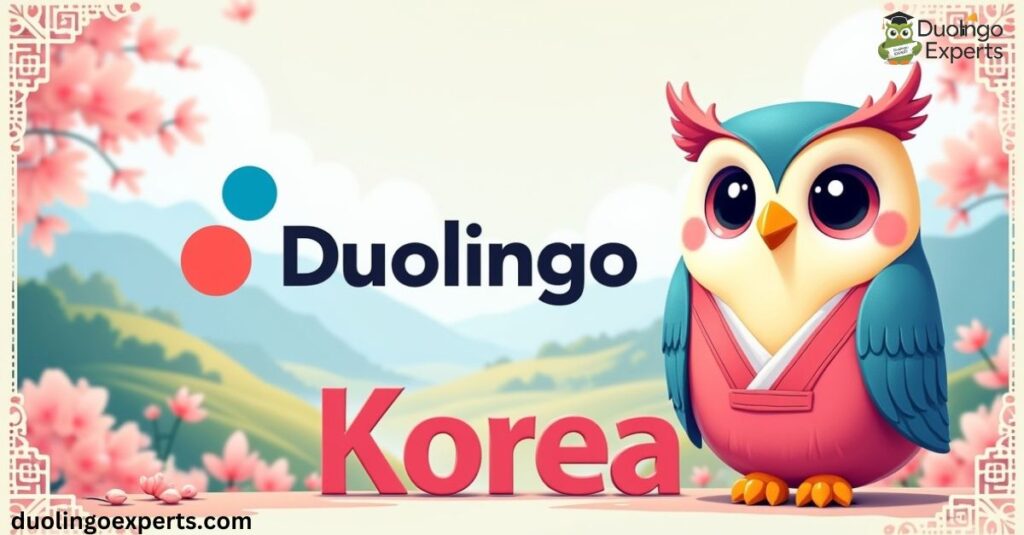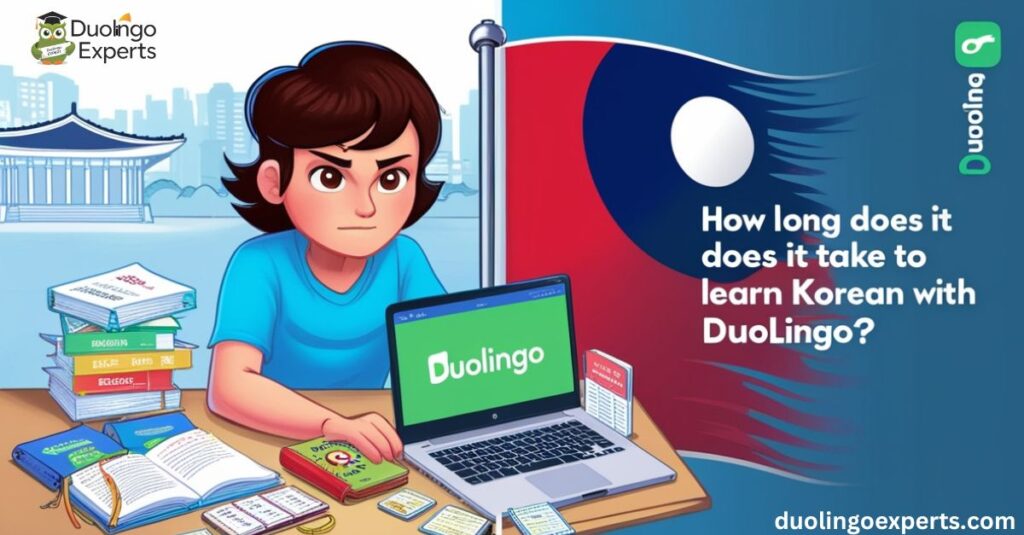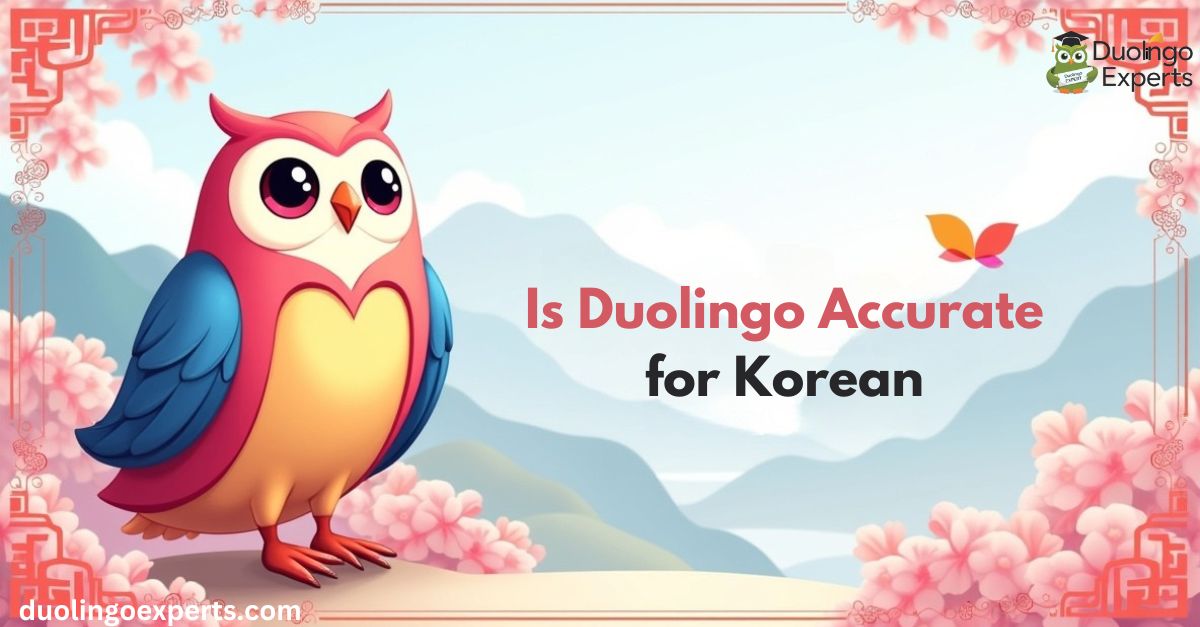Duolingo is one of the most popular language-learning apps worldwide, praised for its user-friendly design and gamified approach. Among its many languages, Duolingo Korean has garnered considerable attention as more learners seek to explore the Korean language. But the question remains: is Duolingo accurate for Korean?
But how accurate is Duolingo Korean when it comes to effectively teaching the language? Can you truly become conversational, or is it just a surface-level tool? This post dives deep into the effectiveness, accuracy, and real-world results of learning Korean with Duolingo.
Duolingo Korean Course Overview
Structure of the Course
The Duolingo Korean course is built around the core principle of gamification, with lessons organized into a tree structure that gradually increases in complexity. It offers a clear progression from Hangul, the Korean alphabet, to basic conversational phrases and eventually more advanced grammar.
The course is designed to accommodate beginner to intermediate learners, with a heavy emphasis on vocabulary and grammar.
- Skill Tree: Duolingo’s structure includes various “skills” that range from basic to advanced. Each skill covers a specific area of learning, such as vocabulary, sentence structure, or listening practice.
- XP Points System: Learners earn experience points (XP) for completing lessons. These points encourage users to engage regularly and make learning feel like a game.
- Interactive Learning Elements: Features such as matching and listening exercises, and speaking practice help build vocabulary and pronunciation in practical, interactive ways.
Course Content Breakdown
The Duolingo Korean course covers essential elements for beginners:
- Hangul: The app teaches you to read and write Hangul, the Korean alphabet, in the first few lessons.
- Vocabulary: It introduces core vocabulary in categories like food, family, and travel, aiming for over 3,000 words throughout the course.
- Grammar: Basic sentence structures are taught with a focus on subject-object-verb (SOV) order. While it covers important grammar rules, the explanations can feel somewhat minimal for advanced learners.
- Pronunciation: Duolingo uses text-to-speech (TTS) technology to provide pronunciation examples, but it’s often up for debate whether it’s perfectly accurate.
Duolingo Korean: Strengths and Limitations

Strengths of Duolingo Korean
- Gamified Learning: The gamification in language learning makes it easy to stay motivated. Virtual badges and XP points provide a sense of accomplishment, while the game-like elements encourage consistent practice.
- Flexible Learning: Duolingo offers bite-sized lessons that you can complete on-the-go, making it ideal for busy learners.
- Free Access: You can start learning Korean with Duolingo for free, with an optional premium subscription for extra features like offline access and ad-free learning.
- Consistent Updates: The app constantly updates its course material, adding new words, phrases, and even cultural insights.
- Accessibility: It’s available across multiple devices, including smartphones, tablets, and desktops.
Limitations of Duolingo Korean
- Simplified Grammar: While Duolingo does provide useful grammar instruction, it doesn’t go into great depth. For example, while it teaches basic sentence structure, it misses important nuances like speech levels and honorifics, which are crucial in Korean culture.
- Lack of Cultural Context: Duolingo doesn’t offer much information on the cultural use of language, including social nuances in the Korean honorifics system.
- Limited Real-Life Conversation: The app doesn’t simulate real-world conversations effectively. While you practice with the app’s AI, it’s not a substitute for speaking with native speakers.
Accuracy of Duolingo Korean
Vocabulary Coverage: How Extensive and Practical Is It?
Duolingo’s vocabulary coverage in Korean includes core everyday words but lacks specialized vocabulary for more advanced learners. For example:
- You’ll learn words related to food, family, and transport, which are useful for daily interactions.
- However, more advanced terms, such as those used in business or academic settings, are often absent.
- Lexical Coverage: The app covers over 3,000 words, which is quite impressive for beginners, but there’s room for improvement in niche areas.
Table: Comparison of Duolingo Korean Vocabulary vs. Other Apps
| App | Vocabulary Range | Focus Areas |
|---|---|---|
| Duolingo Korean | Over 3,000 words | Everyday language, basic grammar |
| Memrise | Over 3,500 words | Conversational skills, cultural expressions |
| LingoDeer | Over 2,500 words | Grammar-heavy, detailed lessons |
Grammar Structure and Accuracy
Duolingo provides a basic understanding of Korean grammar but isn’t exhaustive. It teaches:
- The subject-object-verb (SOV) sentence structure.
- Common verb conjugations.
- Some basic sentence types, like questions and statements.
However, grammar instruction on Duolingo can be superficial. For example, learners might struggle with understanding more complex sentence structures or the rules around politeness levels (e.g., informal, formal, and honorific speech).
Pronunciation and Audio Accuracy
One of the most debated aspects of Duolingo is its pronunciation modeling. Duolingo uses TTS for its audio, and while it works for the most part, it’s not perfect. Some users report mispronunciations, particularly with less common words or rapid speech.
- Audio Recordings: Duolingo uses a computer-generated voice to speak the lessons. While it’s relatively clear for a beginner, it lacks the intonation and expressive qualities of a native speaker’s voice.
- Pronunciation Feedback: Speech recognition may not always be accurate, leading to frustration for learners trying to perfect their pronunciation.
- Phonetic Transcription: Duolingo doesn’t provide enough phonetic transcription to help learners correctly interpret sounds, especially for consonant endings or vowel nuances unique to Korean.
Speech Recognition: Analyzing Its Effectiveness
Duolingo’s speech recognition technology attempts to assess whether the learner’s pronunciation is correct. However, users report that it doesn’t always detect nuances in speech patterns or tone:
- Error Detection in Speech Recognition: The system struggles with detecting slight mispronunciations or phonetic variations, which is common with languages like Korean that have precise speech rules.
- Limitations: If you’re a beginner, the app might incorrectly reject your pronunciation even if it’s close to correct. This could be frustrating for those learning how to pronounce Korean words accurately.
Native Speaker Accuracy
Native speakers are used sparingly in Duolingo Korean’s audio. The app primarily relies on TTS for its pronunciation practice, meaning it lacks the authenticity of real human speech.
While Duolingo has made efforts to improve its speech synthesis accuracy, there’s still a gap in terms of intonation and cultural nuances found in native conversations.
How Long Does It Take to Learn Korean with Duolingo?

Time Commitment per Day/Week
To become proficient in Korean with Duolingo, you’ll need consistent practice. The app recommends a 30-minute daily study session for the best results. If you aim to study 5 days a week, you can make noticeable progress, but it still depends on your individual learning pace.
Course Completion Timeline
The Duolingo Korean course is designed to be completed in about 3 months to 2 years, depending on how consistently you study. For instance:
- Basic proficiency can be achieved in 3-6 months if you complete lessons regularly.
- Reaching conversational fluency takes 1-2 years with regular practice.
Time to Achieve Proficiency
The Foreign Service Institute (FSI) estimates that learning Korean requires about 2,000 hours to reach proficiency. Duolingo’s course alone won’t get you to that level, but it can be a useful starting point to build foundational knowledge.
Real World Results: Can You Speak Korean After Completing Duolingo?

How Duolingo Prepares You for Real Conversations
Duolingo’s conversational lessons are a great introduction to basic dialogues and everyday phrases. However, you won’t be able to hold deep or complex conversations after completing the course. The app does a good job of teaching:
- Basic greetings (e.g., “안녕하세요” – “Hello”).
- Simple questions (e.g., “이거 뭐예요?” – “What is this?”).
- Essential vocabulary for daily interactions.
For advanced conversations, you’ll need to practice with real people or engage in more immersive methods like language exchange or Korean immersion.
Does Duolingo Help with Writing and Reading?
Duolingo offers some practice in Hangul reading and writing, particularly in the early stages. But as you move through the course, the writing exercises become more sparse. For full fluency in reading and writing, you’ll need supplementary resources like textbooks or online reading materials.
User Feedback and Reviews
Success Stories: Real Learners’ Experiences
Many users report that Duolingo’s interactive learning algorithms and gamified system kept them engaged enough to build a solid foundation in Korean. However, users emphasize the importance of supplementing the app with real-world practice to become fully fluent.
Common Criticisms and Challenges
Despite its popularity, Duolingo Korean faces criticism:
- Speech recognition errors frustrate learners.
- Lack of cultural context or advanced grammar.
- Limited focus on real-world conversational AI interactions.
Frequently Asked Questions
How long does it take to learn korean on Duolingo?
The time it takes to learn Korean on Duolingo varies, but most learners can expect to spend anywhere from 3 months to 2 years depending on their consistency and goals. To achieve basic proficiency, daily practice of about 30 minutes is recommended.
Is Duolingo good for Korean?
Duolingo is good for Korean if you’re a beginner looking to build a solid foundation in vocabulary and basic grammar. However, for advanced fluency and deeper cultural understanding, it may need to be supplemented with other resources.
Is Duolingo accurate for learning Korean?
Duolingo is generally accurate for learning Korean at the beginner level, especially for vocabulary and basic sentence structures. However, its pronunciation and advanced grammar coverage may not always be fully reliable for achieving fluency.
What is the most accurate Korean learning app?
The most accurate Korean learning app is likely LingoDeer, as it offers more in-depth explanations of grammar, pronunciation, and sentence structure compared to Duolingo. It’s particularly strong in teaching Korean honorifics and complex sentence forms.
Is Lingodeer or Duolingo better for Korean?
LingoDeer is better for Korean if you’re looking for more structured grammar lessons and a deeper understanding of the language. Duolingo, however, is more engaging and ideal for beginners seeking a fun, gamified approach to learning.
How popular is Korean on Duolingo?
Korean on Duolingo has become increasingly popular, with millions of learners worldwide using it to start their language journey. The course’s growth is driven by the global rise in interest in K-pop, K-dramas, and Korean culture.
Can Duolingo make you fluent in Korean?
While Duolingo can help you build a solid foundation in Korean, it is unlikely to make you fluent on its own. To achieve fluency, you’ll need additional practice with native speakers and more comprehensive resources beyond Duolingo.
Can I learn Korean in 1 month?
Learning Korean in 1 month is possible for basic phrases and vocabulary, especially with apps like Duolingo. However, achieving fluency or mastering grammar will take much longer and requires consistent practice over several months or years.
Does Korean university accept Duolingo?
Some Korean universities accept Duolingo English Test scores for English proficiency, but not for Korean language proficiency. For Korean, universities typically require tests like the TOPIK (Test of Proficiency in Korean).
What’s the best way to learn Korean?
The best way to learn Korean is through a combination of formal classes, language apps like LingoDeer, and consistent practice with native speakers. Immersing yourself in Korean media (dramas, music, etc.) also helps reinforce learning in a natural context.
Conclusion: Is Duolingo Korean Worth It?
Duolingo Korean offers a solid foundation for beginners, but it falls short when it comes to advanced grammar and pronunciation accuracy. While it provides a fun and interactive way to start learning, it might not be enough for achieving true fluency.
So, is Duolingo accurate for Korean? It’s a great tool for learning the basics, but for real conversational skills and deep understanding of Korean grammar, you may need additional resources.

DuolingoExperts, managed by MarkJohan, offers expert insights and tips for mastering languages. A tech-driven platform to enhance your learning experience.

